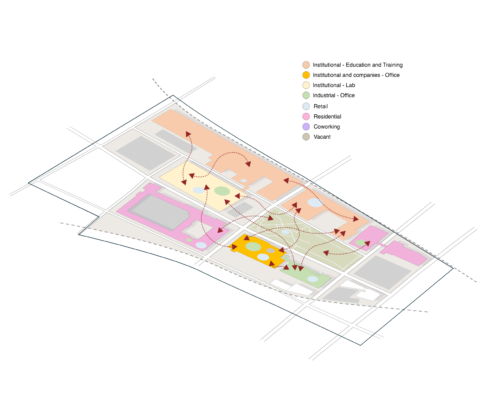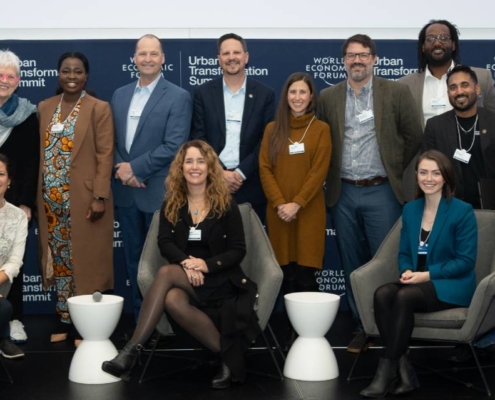 https://www.giid.org/wp-content/uploads/2024/03/Centrality-of-Land-Body-image-White-BG.png
1368
1690
Federico Jorge
https://www.giid.org/wp-content/uploads/2019/01/Global-Institute-on-Innovation-Districts-logo-color.png
Federico Jorge2024-04-09 08:53:162024-04-10 10:37:17Innovation Districts and the Centrality of Land
https://www.giid.org/wp-content/uploads/2024/03/Centrality-of-Land-Body-image-White-BG.png
1368
1690
Federico Jorge
https://www.giid.org/wp-content/uploads/2019/01/Global-Institute-on-Innovation-Districts-logo-color.png
Federico Jorge2024-04-09 08:53:162024-04-10 10:37:17Innovation Districts and the Centrality of LandDeepening Our Collective Understanding of Innovation Districts:
The GIID Team Set to Analyze Nine Innovation Districts across Six Countries
Over the past decade, the rise of innovation districts across all global regions has garnered considerable interest among government leaders, private and philanthropic investors, global-reaching companies, and others. It has also led these same actors to ask challenging questions about innovation districts, seeking additional evidence of their unique value proposition and long-term impact.
A recent article by Simon Tripp of TEConomy provides powerful empirical evidence of the way one district in the United States—now home to hundreds of companies, start-ups, and new jobs—is playing an outsized role in advancing its local and regional economy.
While several research organizations and consulting firms have examined innovation districts—primarily conducting deep analysis in one district or partial analysis across multiple districts within one country—no organization has conducted comprehensive analysis of districts across multiple global regions. Yet innovation districts are now a global phenomenon, driving policymakers and practitioners to learn from other districts, whether they are located in America, Asia, or Australia.
TIME TO GO DEEP AND GO GLOBAL
The Global Institute on Innovation Districts (The Global Institute) aims to provide greater clarity on the power and potential of these highly individualized, dynamic, and complex geographies around the world. To match the multi-dimensionality of such districts, The Global Institute has assembled a multi-disciplinary team of senior researchers with expertise in innovation processes, physical planning, economic development, higher education policy, and entrepreneurship. Together, team members are conceiving new ways of understanding and “reading” districts. Our frustration with how districts are mapped on GIS, for example, has compelled the team to seek new approaches to depicting the complexity of districts.
The districts to be evaluated span six countries—Australia, Colombia, Israel, the Netherlands, the United Kingdom, and the United States—and are in different stages of development.
The process of analyzing innovation districts across global regions has presented tremendous challenges in finding both reliable data and comparable data. Early analysis of districts across just six countries revealed significant limitations in our ability to evaluate districts over time, such as over a 5-year period. This is largely due to the fact that most districts have established highly individualized approaches to tracking their own growth and development, making it impossible to compare and contrast.
A more accurate way to analyze districts and their power is to examine how districts perform within their own country and region, given the unique strengths they possess in economic clusters, talent, and technologies.
UNDERSTANDING THE MULTI-DIMENSIONALITY OF INNOVATION DISTRICTS
These realities illustrate the importance of understanding districts within their own regional and national contexts, as well as appreciating the unique factors behind each district’s story and success. In light of this, our team has devised our own set of questions that the research intends to answer:
- To what extent are innovation districts creatures of their regional economy, and/or to what extent are they emerging engines that ignite economic evolution?
- How is industry R&D playing a role in shaping an ecosystem that was originally catalyzed by the location of R&D research institutions?
- To what extent are districts leading their own physical transformation, and/or to what extent does that transformation require significant and aligned investment by other actors (such as government, philanthropy, or the private sector)?
- What key data should districts be collecting and regularly updating to demonstrate their growth and long-term impact, whatever their global region and the economic starting point of their city or region.
These and other questions led our team to be increasingly reflective and sensitive to the complexities inherent in districts and their surrounding context. Building on these observations, we have developed a series of pathways for analyzing districts over the next eight months:
- Comparing each district to its metropolitan region—to understand what role regional research and innovation strengths, industry specializations, and economic performance play in the development of innovation districts.
- Assessing the alignment of each district’s research and innovation focus to those of its anchor institutions—to understand how districts’ strengths in a particular discipline or industry derive from and enhance their anchors.
- Surveying mature companies about their reasons for locating in a district—to reveal the assets and advantages that attract savvy market actors from different industries to districts and how this process has changed over time.
- Reviewing the horizontal set of systems that districts have developed over time—to take a snapshot of systems and look at such things as intermediaries, the development of networks, and platform technologies.
- Assessing the extent to which districts are linking their innovation and economic inclusion agendas—to reveal how districts are leveraging their unique position to strengthen opportunity for local communities.
- Examining how districts are transforming themselves physically—to reveal how districts are increasing density, proximity, accessibility, and walkability. To also analyze districts through new lenses, such as ground floor porosity (the blurring between public and private spaces) and the extent to which districts possess nodes or “hot spots” of concentrated activity.
- Analyzing how districts are organizing themselves for success—to examine whether districts have established an overarching governance structure, whether they generate and distribute revenues, and the extent to which various organizations are linked and connected.
Through this multi-dimensional approach, we intend to surface powerful new insights to inform policy and practice. Our team will then link these findings to the overarching framework outlined in The Evolution of Innovation Districts, which organizes how districts are evolving through intentional, orchestrated acts: creating a clear competitive advantage, building critical mass, facilitating convergence, developing quality of place, orchestrating a “buzzing,” connected community, strengthening inclusion, and organizing for success.
HOW WE ARE ORGANIZING FOR SUCCESS
We conclude by sharing one of our early insights from this new research: It also “takes a village” to effectively evaluate the complexity of districts. As we continue to learn more across global regions, we develop new partnerships with organizations that possess cutting-edge research, data, and insight.
As we gain insights, we will commission a series of long and short articles designed to help districts in their own pathway of growth. The Global Institute will use these insights to strategically support the hundred districts emerging around the world: encouraging actors to advance their level of intentionality, to strengthen cross-organization collaboration and leadership, to transform the physical landscape in creative and sustainable ways, and ultimately to attract new growth and investment.
Please continue to look for updates from our team as we move forward on this wonderfully surprising journey of discovery.


